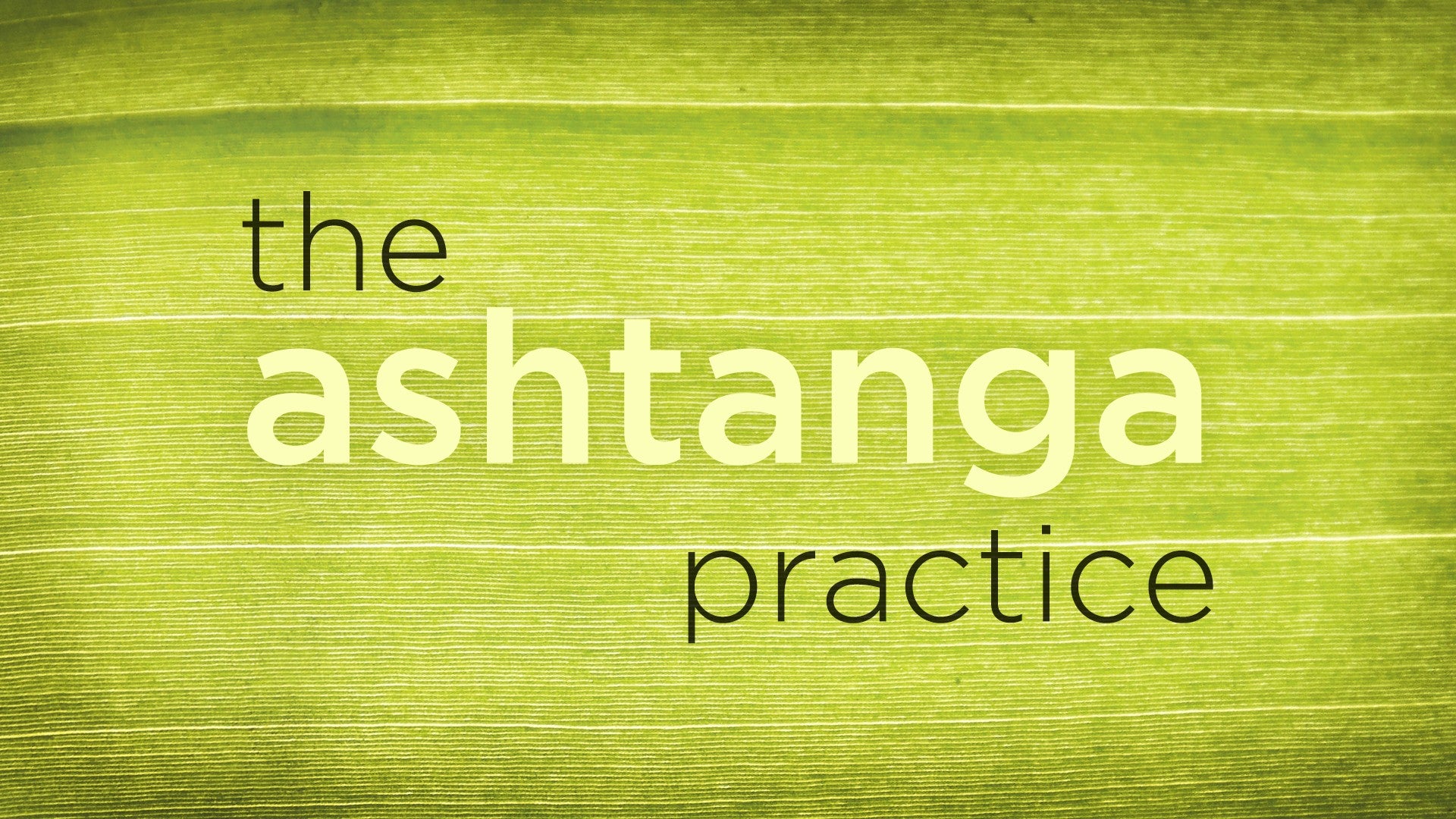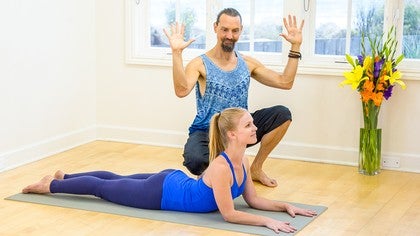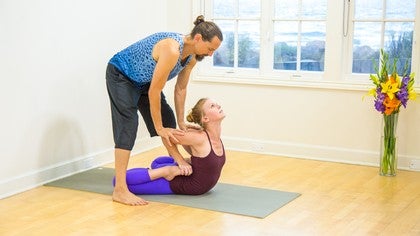Description
About This Video
Transcript
Read Full Transcript
Greetings, now we'll think about Salumba Sarvangasana, shoulder stand. But before we go upside down, find yourself in a comfortable seated position and let's do a little breathing together. As you exhale completely, feel the bundles scoop in and as you inhale, feel the chest rise and the spine lengthen, taking long, slow, full deep breaths. Notice your sitting bones down upon the mat and try to feel that both sitting bones are evenly grounding or if one sitting bone is rising up higher, notice that. And then become aware of the area in between the sitting bones and see if on an exhale, you can push out a little extra breath and feel the area between the sitting bones gently rising the pelvic floor, lifting up, mula bandha rising away from the mat in between the grounding roots of the sitting bones, the ischial tuberosities.
Long slow, full deep breathing with sound, every exhale grounding sitting bones. Every inhale feeling that scoop away of mula bandha rising up the space between the roots. So we can feel from that upward lifting of mula bandha that there's an upward flow of prana and as we sit in our normal seated positions, we find that upward flow ideally throughout the entire practice. Finishing our practice, we often go upside down and inversions are incredibly useful to our practice. So the final finishing inversions, shoulder stand is a great one where you can spend some time upside down. It's so key for our practice because it's detoxifying, it's purifying. Unlike the red blood, the white blood cells, the lymphatic system doesn't have a pump. So white blood cells course through our body, taking out old toxins, taking out old cells that need to be regenerated, and then the flow of white blood cells brings those toxins to recycling points or brings them out of the body. But if you're not going upside down, it's often that toxins accumulate low on the underside of internal organs. Going upside down, again, gets that great flow of lymph and white blood cells. So it's very purifying, it's very invigorating, and it's very refreshing. After deep inversion practice, you probably feel wide awake and nature's best antidepressant going upside down. So shoulder stand said to be the queen of the asanas. It's wonderful that we have our queen, Satrine, here for demonstrating. And we'll think about how we can best approach shoulder stand. Standing on the shoulders is what we're up to here. So Satrine, let me have you face this way, and let's be able to look at what's going on at the shoulder area, and importantly, at the space between the shoulders. So here we see the shoulders, if I was the floor here, the shoulders would be pressing down. But what if Satrine was to tuck her chin in deeply? Ah, now we might start to see that the cervical vertebrae, the neck bones, start to protrude forth. And now if I was the floor, she would be resting on her cervical vertebrae on the floor, and we want to avoid that. So if you're able to, it may be that just drawing the shoulders back and down, broadening the collarbones, even with the chin down, voila, would keep the shoulders, the active roots, and the space between the shoulders at the cervical vertebrae would be lifted away from the mat. So ideally, in Salomba Sarvangasana, or shoulder stand, you want the shoulders pressing onto the mat.
Okay, you can release that. Now it may be the case that you're not able to press the shoulders back, or depending on the shape of the bones, bones may be pressing into the mat. No problem. At that point, you want to feel free to use some kind of props. Build some kind of structure using blankets or towels under the shoulders, not under the head. You're not building a pillow to rest upon here. So the blankets will just be under the shoulders. Why will that help? Well, if you tuck your chin in deeply, you'll see then her cervical vertebrae are poking out. But if she was to have something under the shoulders, it would elevate her shoulders, and then her chin would be less towards the chest, and then she'd be resting on the shoulders and not having the cervical vertebrae resting on the mat. So let's take on a shoulder stand and explore it. If you don't need props, if you know that your cervical vertebrae don't touch the mat, you don't need them. But if you're worried about cervical vertebrae touching the mat, go ahead and take a blanket or two, fold them so that they're even and flat, and then place your shoulders down upon the blankets. Now remember that your head is going to rest off of the blanket. Just the shoulder will be down. So just the tip of the shoulder at the top edge of the blanket. And then from there, you can come into shoulder stand however you like, maybe coming in through halasana, inhaling and drawing the feet back behind the head, exhaling to take the hands onto the small lower back or even the middle back. And then from there, if you can with straight legs, inhaling to bring the legs up, one at a time or together is even better. And using the hands to support some weight, salambha with support, sarvangasana, all limbs lifted, really detoxifying. So the idea here is just as in your seated position with both sitting bones grounding evenly, the roots grounding down, and in between mula bandha lifting up. Now we've turned the entire thing upside down and your rooting action is going to come through the shoulders rolled back and down into the earth, into the mat, into the blankets, and the area between the shoulder blades where the cervical vertebrae are will be protected by the lifting through there. So as a teacher, I should be able to look and see. And if Satrine, if you extend your left arm, you guys might be able to look and see that in between her shoulder blades, there's space. There's some space there. So she does have that rising up that doming up and the cervical vertebrae are not pushing into the mat. And from that way she's able to take shoulder stand with nice, long, smooth, full breath and protecting the cervical vertebrae. And you can exhale and come down. Good. Letting the spine roll down the mat will come all the way down. And let's come together in a sitting position. And again, find that your sitting bones are evenly grounding, that you have the rising up through the spine, that each and every breath, each and every breath is a celebration of being refreshed and invigorated as this practice detoxifies and brings us joy. Thanks.
The Ashtanga Practice: Dylan Bernstein
Comments
You need to be a subscriber to post a comment.
Please Log In or Create an Account to start your free trial.









